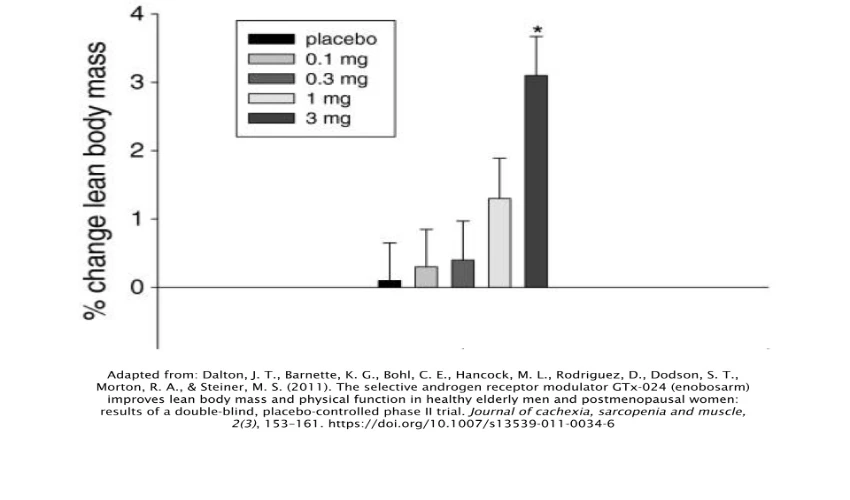Ostarine, also known as MK-2866 or Enobosarm, is a selective androgen receptor modulator (SARM) that has garnered significant attention in the bodybuilding and fitness communities. Unlike traditional anabolic steroids, SARMs are designed to selectively target androgen receptors in muscle and bone tissues, theoretically minimizing unwanted side effects on other organs. However, it’s crucial to understand that Ostarine is an investigational drug, not approved by the FDA for any medical use, and its long-term safety and efficacy are still being investigated. Despite this, it is sometimes found in dietary supplements, particularly those marketed for bodybuilding, and is banned by major sports organizations like WADA and the NCAA.
Given its unapproved status, there is no universally “ideal” Ostarine dosage. Information regarding dosages primarily comes from clinical trials for specific medical conditions, anecdotal reports from users, and some research studies. It’s essential to approach any discussion of Ostarine dosage with extreme caution and recognize the inherent risks involved.
Understanding Ostarine’s Potential Applications and Reported Dosages
Ostarine mk2866 has been studied for its potential in treating muscle-wasting diseases (cachexia) and osteoporosis, showing promise in increasing lean body mass and improving functional performance. In the context of athletic performance and bodybuilding, users often seek Ostarine for:
- Muscle Growth: Its ability to stimulate protein synthesis in muscles.
- Fat Loss: Its potential to help preserve muscle mass during a calorie deficit.
- Faster Recovery: Anecdotal reports suggest improved recovery times.
- Bone Health: Studies indicate it can improve bone quality and strength.
Reported dosages for these goals vary:
- For Muscle Gain (Bulking): Anecdotal reports often suggest dosages ranging from 15mg to 30mg per day. Some sources indicate starting with 20mg/day for muscle gain.
- For Fat Loss (Cutting): Lower dosages, typically 10mg to 20mg per day, are commonly cited. Beginners are often advised to start with 10mg/day.
- For Women: Due to potentially higher sensitivity and to minimize the risk of androgenic side effects, women typically use lower dosages, often around 5mg to 15mg per day.
Factors Influencing Dosage Decisions (Anecdotal & Unofficial)
For those who choose to use Ostarine despite its unapproved status and risks, several factors are anecdotally considered when determining a dosage:
- Individual Goals: As mentioned, bulking often involves higher doses than cutting.
- User Experience: Beginners are generally advised to start with the lowest effective dose to assess their individual response and tolerance. Experienced users might gradually increase the dose, but this also carries increased risks.
- Tolerance and Side Effects: Monitoring for side effects is crucial. If adverse effects appear, reducing the dosage or discontinuing use is often recommended.
- Cycle Length: Ostarine cycles typically last 6 to 8 weeks, with some experienced users extending to 10-12 weeks. Longer cycles and higher dosages are generally associated with a greater risk of side effects and more significant testosterone suppression.
Side Effects and Risks of Ostarine
Despite being touted as having fewer side effects than traditional anabolic steroids, Ostarine is not without risks. Clinical trials and user reports have highlighted several potential adverse effects:
- Hormonal Suppression: Ostarine can suppress natural testosterone production, especially at higher doses and longer cycle lengths. This necessitates Post Cycle Therapy (PCT) to help restore natural hormone balance after a cycle. Without PCT, users may experience fatigue, low libido, and loss of muscle gains.
- Liver Damage: There are reports of elevated liver enzymes and potential liver damage associated with Ostarine use.
- Cardiovascular Issues: Some studies and anecdotal reports suggest potential adverse effects on serum lipids, specifically a decrease in HDL (good) cholesterol, which could impact cardiovascular health.
- Headaches
- Acne and Skin Problems
- Hair Loss
- Vision Problems: While primarily associated with other SARMs like S4 (Andarine), some users report visual disturbances.
- Nausea and Diarrhea
- Fatigue
It’s critical to understand that the full extent of short-term and long-term effects of Ostarine is still under investigation due to its unapproved status. The long-term impact on various organ systems remains largely unknown.
The Importance of Post Cycle Therapy (PCT)
If an individual chooses to use Ostarine, a well-planned PCT is considered essential to mitigate the hormonal suppression that can occur. The goal of PCT is to help the body restore its natural testosterone production and hormonal balance. PCT protocols typically involve compounds like Nolvadex (Tamoxifen) or Clomid (Clomiphene), which are Selective Estrogen Receptor Modulators (SERMs). PCT usually lasts 4 to 6 weeks, starting immediately after the Ostarine cycle ends. Without proper PCT, users risk losing muscle gains and experiencing prolonged symptoms of low testosterone.
Legal and Ethical Considerations
It’s vital to reiterate that Ostarine is not approved for human consumption and is classified as an investigational drug. Its sale for human use is illegal in many places. Furthermore, as a banned substance by major anti-doping agencies, athletes who use Ostarine risk disqualification and severe penalties.
Conclusion: A Risky Endeavor Without an “Ideal” Dose
There is no “ideal” Ostarine dosage that can be definitively recommended for optimal results, primarily because it is an unapproved and unregulated substance. While anecdotal reports and limited research exist, the lack of extensive human trials means that any use carries significant, unquantifiable risks.
Individuals considering Ostarine should be fully aware of the legal ramifications, the potential for serious side effects, and the uncertain long-term health consequences. For those seeking to enhance their physique or performance, focusing on proven, safe, and legal methods – such as consistent training, a balanced diet, adequate rest, and approved supplements – remains the most responsible and sustainable path. Consulting with qualified healthcare professionals and certified fitness experts is always recommended before considering any performance-enhancing substances.
